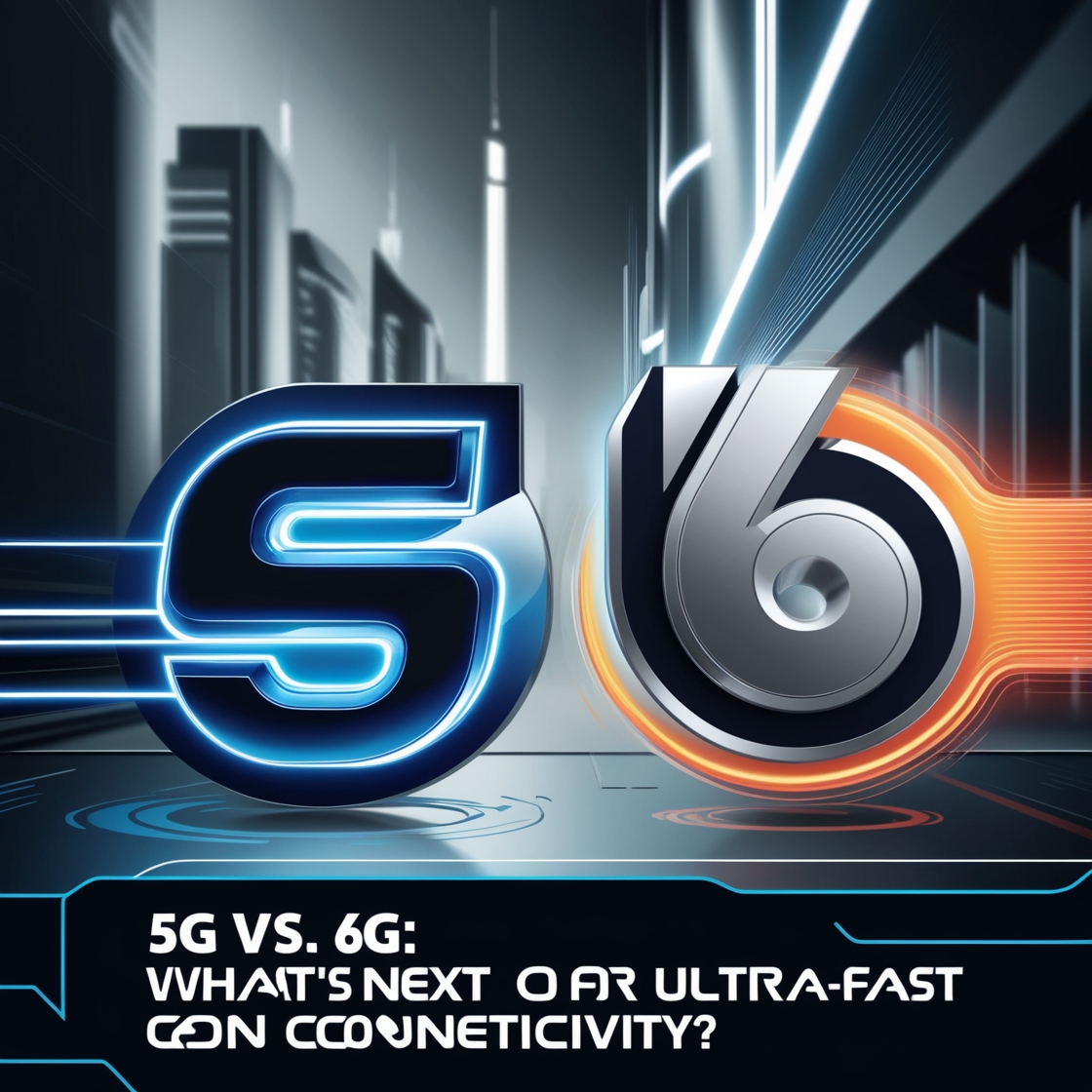Introduction
Connectivity has become the backbone of our digital lives. Whether it’s streaming our favorite shows, attending virtual meetings, or managing smart home devices, fast and reliable internet is essential. But as technology evolves, so do our demands. Enter the ongoing debate: 5G vs. 6G – which one will define the future?
To truly grasp the implications, let’s first explore where we stand with 5G and what 6G promises to deliver.
What is 5G?
Key Features of 5G
5G, or the fifth generation of wireless technology, brought revolutionary changes. Its standout features include:
- Ultra-Fast Speeds: With download speeds reaching up to 10 Gbps, 5G makes buffering a thing of the past.
- Low Latency: Lag time dropped dramatically, enabling real-time interactions critical for gaming and remote surgeries.
- Massive Device Connectivity: Supporting up to a million devices per square kilometer, 5G made smart cities a reality.
How 5G Changed the Connectivity Landscape
5G unlocked new possibilities, from autonomous vehicles communicating seamlessly to industries running on smart factories. It didn’t just improve speed; it redefined connectivity’s role in our daily lives.
Applications of 5G in Daily Life
From faster downloads to smart appliances, 5G has infiltrated almost every aspect of our lives. Think virtual reality gaming, remote healthcare, and enhanced video conferencing.
Introducing 6G
What is 6G?
6G represents the next leap in connectivity, expected to surpass 5G by a wide margin. This technology aims to provide speeds 100 times faster than 5G, almost unimaginable today.
How 6G Differs from 5G
- Speed Enhancements: Imagine downloading a full-length movie in seconds.
- Smarter Connectivity: 6G will rely heavily on AI, making networks more adaptive and intelligent.
- Integration with AI and IoT: Seamless communication between billions of devices, smarter automation, and personalized experiences.
Anticipated Features of 6G
From holographic communication to 3D virtual reality, 6G will redefine what’s possible. Its applications will likely go far beyond our current imagination.
Comparison: 5G vs. 6G
Speed Comparison
While 5G boasts speeds of up to 10 Gbps, 6G promises 1 Tbps—yes, terabits! This leap will unlock futuristic possibilities.
Latency and Responsiveness
6G’s latency is expected to be nearly non-existent, opening doors to real-time operations in fields like medicine and military defense.
Network Capacity
With enhanced bandwidth, 6G will accommodate even more devices without compromising performance.
Potential Challenges in Deployment
Deploying 6G requires overhauling existing infrastructure, making it a costly and time-consuming endeavor.
Benefits of Transitioning to 6G
Revolutionizing Industries with 6G
Industries like healthcare, entertainment, and transportation will benefit immensely. For example, surgeons could operate remotely using advanced robotics with zero lag.
Impact on Smart Cities and IoT
6G will power smarter cities with autonomous systems for traffic, energy management, and public safety.
Enhanced User Experiences
From immersive VR gaming to 8K streaming on mobile, 6G will elevate personal tech experiences to a whole new level.
Challenges of 6G Implementation
Infrastructure Requirements
Building the infrastructure for 6G will require significant investments in fiber optics, satellites, and towers.
Cost of Development and Deployment
The financial burden of developing 6G networks could slow down its adoption.
Regulatory and Ethical Concerns
Privacy, data security, and ethical usage will become even more critical with advanced connectivity.
The Road Ahead
Expected Timeline for 6G Rollout
Experts predict 6G networks will begin rolling out around 2030, though widespread adoption may take years longer.
How 6G Could Shape Future Connectivity
6G won’t just improve connectivity; it will revolutionize how we interact with the world, creating a more interconnected and intelligent digital ecosystem.
What Happens to 5G?
5G will remain relevant for many years, supporting areas where 6G isn’t yet feasible.
Conclusion
The transition from 5G to 6G marks an exciting chapter in technological evolution. While 5G has set a strong foundation, 6G aims to take connectivity to unprecedented heights. Whether it’s faster speeds, smarter systems, or new innovations, the future of connectivity is incredibly bright.
FAQs
What are the main differences between 5G and 6G?
6G is expected to offer speeds 100 times faster than 5G, ultra-low latency, and advanced integration with AI and IoT.
When can we expect 6G to be available?
6G networks are anticipated to begin rolling out around 2030.
Will 6G replace 5G entirely?
Not immediately. 5G will coexist with 6G, especially in areas where infrastructure upgrades are slower.
How does 6G impact the environment?
While 6G offers benefits, its energy demands raise concerns, making sustainability a key consideration.
What industries will benefit the most from 6G?
Healthcare, entertainment, transportation, and smart cities are expected to see the most significant advancements.
